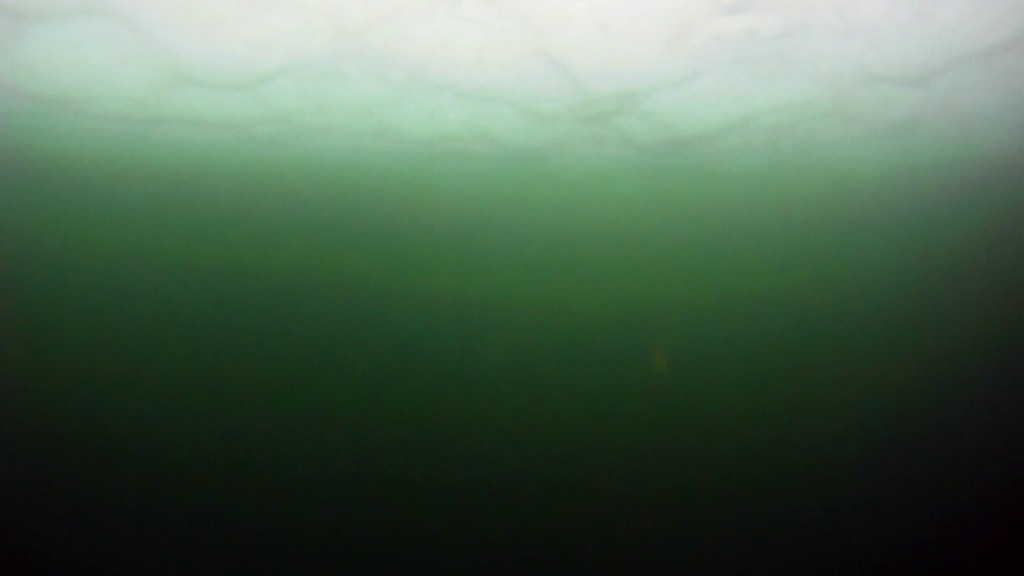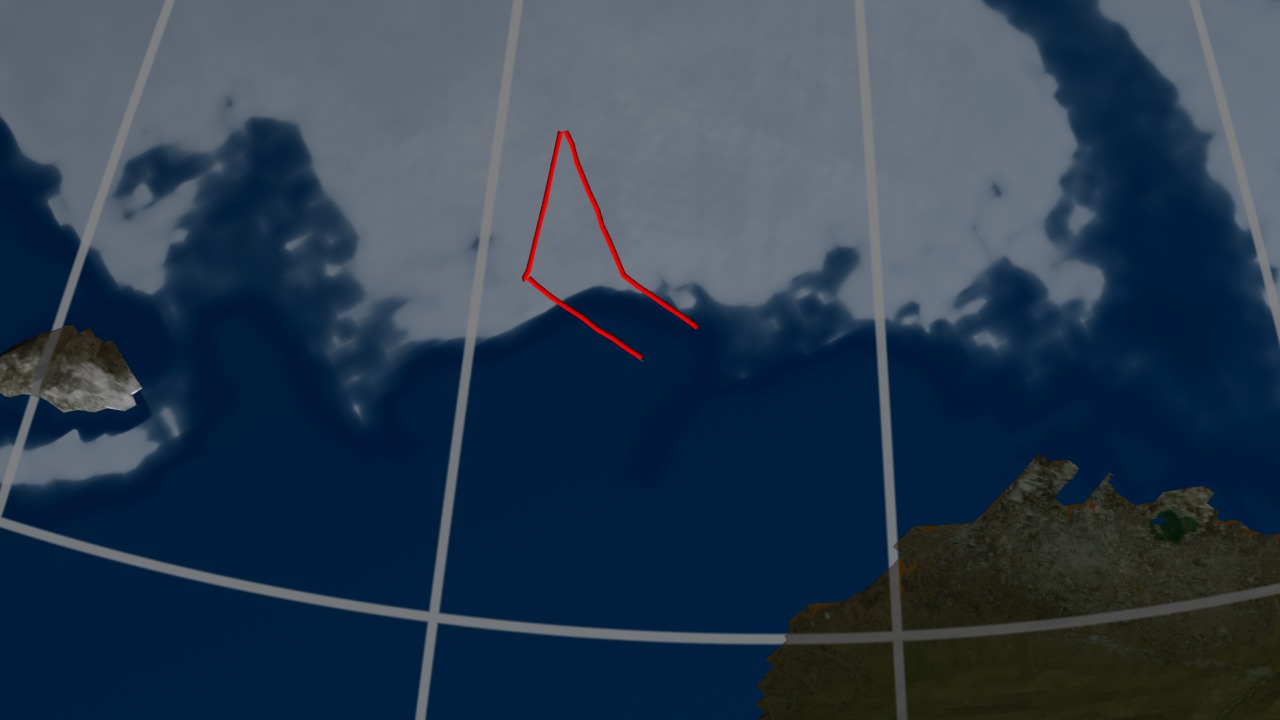Secret Garden
Scientists have long thought that the waters underneath Arctic sea ice were too dark for plant life to grow. But in summer 2011, a NASA expedition to study the impacts of climate change in the Arctic found massive blooms of phytoplankton, tiny plant-like creatures essential for all sea life, thriving below the floating ice pack just north of Alaska. Researchers suspect changes to the Arctic Ocean's frozen ice cover are behind these blooms. Shallow melt ponds riddle the thinning ice at the edges of the ice cap, acting as natural skylights that allow sunlight to reach the nutrient-rich waters below. These conditions create the perfect breeding ground for phytoplankton. The visualization shows phytoplankton concentrations observed at different depths along the expedition's sampling route in the Chukchi Sea from July 3-8, 2011.

Scientists discover the largest under-ice phytoplankton bloom ever seen.
The US Coast Guard Cutter Healy ferried scientists to 26 study sites, where blooms ranged in concentration from high (red) to low (purple).
Researcher David Mayer of Clark University lowers a video camera below the ice to observe a dense bloom of phytoplankton.

Notice how massive growths of phytoplankton (right) dye green the otherwise dark blue Arctic water (left).

An assemblage of diatoms, one of the most common kinds of phytoplankton, were found in a sample of water collected about five feet below the ice.

Canisters containing water samples collected at different depths are carefully brought back on board the ship.

The 420-foot long US Coast Guard Cutter Healy rests at a sample collection station after traveling miles into the sea ice pack.

A patch of Arctic sky reflects off pools of water formed by melt ponds.
For More Information
See NASA.gov
Credits
Please give credit for this item to:
NASA's Goddard Space Flight Center
Under-ice photos and footage courtesy of Karen Frey (Clark University)
Diatoms photo courtesy of William M. Balch/Bigelow Laboratory for Ocean Sciences
Canisters photo courtesy of NASA/GSFC/Kathryn Hansen
Ship photo courtesy of NASA/GSFC/Kathryn Hansen
Melt pond photo courtesy of NASA/GSFC/Kathryn Hansen
-
Animators
- Greg Shirah (NASA/GSFC)
- Trent L. Schindler (USRA)
-
Producer
- Kayvon Sharghi (USRA)
-
Scientists
- Kevin Arrigo (Standford University)
- Karen Frey (Clark University)
- Donald Perovich (U.S. Army Corps of Engineers)
-
Writer
- Maria-Jose Vinas Garcia (Telophase)
Release date
This page was originally published on Thursday, June 21, 2012.
This page was last updated on Wednesday, May 3, 2023 at 1:52 PM EDT.

